Human-wildlife conflict and coexistence is a shockingly common problem, often with enormous consequences for both individual animals and entire populations.
When human-wildlife conflict comes to mind, you may immediately think of wildlife crime instead - which isn't wrong, since many regions with wildlife crime problems like poaching are also areas where people may frequently deal with human-wildlife conflict, causing the two issues to go hand-in-hand. But human-wildlife conflict is a much broader issue encompassing many ways that human presence and interference can cause problems for us and animals alike. Human-wildlife conflict includes:
- Elephants trampling a farmer's crops, resulting in retaliation
- New real estate developments infringing on ecosystems where predator species live, leading to predators having less territory and less food, which in turn leads to predators attacking domestic animals and livestock
- Freeways dividing the territory of animals like mountain lions, leading to wildlife venturing into neighborhoods or being killed by cars
- Lead bullets used in hunting causing scavengers like condors to die of lead poisoning
These are just a few examples of how humans can negatively impact wildlife, and it's clear to see how many of these scenarios could escalate. Human-wildlife conflict solutions don't just include ways in which we can prevent these issues (for example, through tracking predators, monitoring populations' territories, or building barriers and wildlife crossings monitored by sensors), but also the ways in which we can help people connect with wildlife and care about learning to live alongside them.
If you're interested in solutions that can prevent human-wildlife conflict, join this group and get to know the people who are working to protect and save species around the world!
Header image: Casey Allen on Unsplash
No showcases have been added to this group yet.
- @hjayanto
- | He/Him
KONKLUSI (Kolaborasi Inklusi Konservasi - Yayasan)
Your friendly Indo-Crocky-Croc



- 0 Resources
- 44 Discussions
- 17 Groups
Tech for Conservation

- 0 Resources
- 2 Discussions
- 13 Groups
Wildlife Conservation Society (WCS)
I am a devoted conservationist, natural resource management enthusiast interested in Elephant and Pangolin species and passionate about linking communities with environmental conservation

- 1 Resources
- 0 Discussions
- 13 Groups
Technologist and Visual storyteller focusing on social, conservations issues.



- 1 Resources
- 47 Discussions
- 17 Groups
- 1 Resources
- 1 Discussions
- 11 Groups
A Wildlife Biologist interested in Environment Assessment and Restoration, In-situ and Ex-situ strategies, Technologies used in Conservation and Illegal Wildlife Trade.


- 0 Resources
- 16 Discussions
- 15 Groups
- @NevilleCLS
- | He/Him
CLS (Collecte Localisation Satellites)

- 0 Resources
- 1 Discussions
- 14 Groups
- @cristiar.samosir
- | She/Her
Just a woman passionate in conservation practices
- 0 Resources
- 0 Discussions
- 3 Groups
- 0 Resources
- 0 Discussions
- 4 Groups
worked in wildlife conservation coms, now in live music production incl audio, curious about eco/bioacoustics.
- 0 Resources
- 11 Discussions
- 3 Groups
- @Marti09
- | She/her
I'm a PhD student and my research focuses on analyzing patterns in mammals poaching occurrences.

- 0 Resources
- 6 Discussions
- 3 Groups
GreenLab


- 0 Resources
- 20 Discussions
- 8 Groups
Making waves in wetland conservation: Explore the outcomes and insights from Ramsar COP15, a premier global event on wetland protection and sustainability
10 August 2025
Calling conservation organizations working to protect the Asian elephant, apply now for a chance to receive a grant of up to $ 5,000. Proposals are accepted year-round.Photo by Hu Chen on Unsplash.
4 July 2025
This is a chance to participate in a short survey about the preferences that conservation practitioners have for evidence. There's a chance to win one of three £20 Mastercard gift cards.
24 June 2025
A Post-Doc position is available to join the team coordinating the Urban Exploration Project – a collaborative initiative in partnership between the University of St. Andrews and the National Geographic Society.
2 May 2025
This project aimed to reduce human-carnivore conflict by building a resilient boma for a vulnerable family in Hunyari village. It served as a model for other families, promoting stronger livestock protection. The...
17 April 2025
WWF's Arctic Community Wildlife Grants program supports conservation, stewardship, and research initiatives that focus on coastal Arctic ecology, community sustainability, and priority Arctic wildlife, including polar...
7 March 2025
The worst thing a new conservation technology can do is become another maintenance burden on already stretched field teams. This meant Instant Detect 2.0 had to work perfectly from day 1. In this update, Sam Seccombe...
28 January 2025
The Zoological Society of London's Instant Detect 2.0 is the world's first affordable satellite connected camera trap system designed by conservationists, for conservationists. In this update, Sam Seccombe describes the...
21 January 2025
Wildlife on roads creates a significant hazard in rural areas, to humans and animals alike. Low-tech prevention methods such as overpasses give great results, but they are expensive and can’t cover every scenario. Now...
12 November 2024
Very nice video!
7 October 2024
The Connected Conservation is thrilled to announce our award's third round in collaboration with the Airbus Foundation. This award champions the use of cutting-edge satellite imagery to tackle biodiversity loss and...
30 September 2024
The Human-Wildlife Initiative operates in three areas, viz. France's Provence-Alpes-Côte d’Azur ( PACA ) region, French-speaking Switzerland and Spain. Each has it's own call with it's own specifics.
11 September 2024
October 2025
event
September 2024
32 Products
3 R&D Projects
42 Organisations
Recently updated products
Recently updated R&D Projects
Recently updated organisations
| Description | Activity | Replies | Groups | Updated |
|---|---|---|---|---|
| Hi all, Just saw this on the BBC website: http://www.bbc.co.uk/news/blogs-news-from-elsewhere-38288999 Dogs in one town... |
|
Human-Wildlife Coexistence | 8 years 7 months ago | |
| @Suzanne.Stone have you had any success with your trials in Idaho? |
|
Human-Wildlife Coexistence | 8 years 9 months ago | |
| Hi everyone! I have just posted about my machine-vision based elephant-detection system which I am currently attempting to develop! https://www.wildlabs.net/... |
|
Human-Wildlife Coexistence | 8 years 9 months ago | |
| Hi all, I thought I'd alert you to this recent journal article, which looked at all published research on predator... |
|
Human-Wildlife Coexistence | 8 years 11 months ago | |
| Hi John, I have two good friends in Kenya who have some answers. I'll ask them to come here and tell you more... Marie |
|
Human-Wildlife Coexistence | 8 years 11 months ago | |
| http://gizmodo.com/drawing-eyes-on-cow-butts-may-ward-off-hungry-lions-1783744270 Drawing Eyes on Cow Butts May Ward Off Hungry... |
|
Human-Wildlife Coexistence | 9 years ago | |
| Hello all, Another thought I had regarding human-wildlife conflict. Since wildlife migrations occur around similar times, every year,... |
|
Human-Wildlife Coexistence | 9 years 3 months ago | |
| Ho John, That's a great idea and thanks for sharing, but as you said, limitations on battery and speaker capacity abound. Might anyone else have any thoughts on how we... |
|
Human-Wildlife Coexistence | 9 years 3 months ago |
Tech for Rewilding Conflicts
22 November 2018 10:54am
14 March 2019 2:48am
Interesting conversation. From Tech side there is solution which we are workign on.... Its low cost and tech heavy. Attaching Idea
Toughts please.
14 March 2019 12:21pm
Cool idea Ashwan. Looks similar to the virtual parks idea that Laurens is leading. Have you seen it? Also check out rewilding.io and get an entry in to the contest!
Arribada Initiative Update: Testing our prototype thermal cameras with elephants in India
1 March 2019 12:00am
Nominations for the 2019 Tusk Conservation Awards Now Open
12 February 2019 12:00am
Foxlight to deter pumas, but how about Andean foxes?
14 January 2019 3:24pm
9 February 2019 6:23pm
I agree Nilanga, definitely a good PhD topic. The case you raise with elephants is of great concern I imagine, as elephants standing their ground leads me to think of only the most dire of outcomes. With predators, I think a good deal of any successful implementation of aversive approaches also relies on their being sufficient alternative prey/habitat for predators to avoid livestock areas. The same is true for any non-lethal approaches IMO. If alternatives aren't available, it might be all the more difficult to dissuade predators. Is this similar for elephants in this case (i.e. do they actually have alternative sites/food sources nearby that aren't in conflict)?
11 February 2019 3:04pm
You are right, Rob, in that when aggressive behavior in elephants results from more aversive techniques, the outcomes are not great for either party. It's a tough spot to be in since elephants are also extremely intelligent and can find ways to get past most deterrents. Electric fencing, when managed properly and are functioning appropriately, have been proven to be the most effective in keeping elephants out of crop of human-inhabited areas. But then again, elephants also figure out how to either drop things on the fence and break the current or find other ways past such barriers. There is work being done in various places to restore habitat,fodder plant species, and water and mineral sources that would keep elephants out of human areas, but the whole dynamic is changing overall in the face of massive habitat loss and impediments to movement in the form of corridor blockage or disruption, etc. In addition to doing reactive things like prevention and mitigation measures, it's so important to work on the drivers/root causes of the conflict, such as habitat loss and fragmentation. So it's key to work at both levels for longer term solutions to this issue overall.
11 February 2019 7:54pm
A very good summary all-round Nilanga. Only a wholistic approach can truly resolve conflict.
Mobile phones to reduce HWC
8 February 2019 2:31pm
Citizen scientists to analyze HWC interventions
16 January 2019 3:11pm
23 January 2019 2:15pm
Hi Femke,
At the Biological records Centre we have been tackling these issues for over 50 years! You are right to point out that with citizen scientists you can collect/review a lot of data in a relativly short period of time. Our iRecord system collect 1 million observations in 2018, and just look at how many people are reviewing images over in the zooniverse (check out snapshot serengeti).
You are also right to point our that without strict protocols, and with varying abilities, the use of citizen scientists can introduce biases, which often leads to the impression citizen science data is of lower quality. There are ways to account for this statistically when you are working on data collected in the field, and for those reviewing images online both the zooniverse and iSpot have systems in place, such as reputation and multiple reviews of a single image to reach consensus.
There is a good report on using citizen science here.
Best,
Tom
23 January 2019 5:10pm
I agree with Tom's comments. A project I work with has used Zooniverse to identify animals in camera trap images, We include a field guide that helps reviewers with making trickier distinctions such as deer versus elk (challenging in partial views with IR images). We require each image to be identified by thirty reviewers before scoring it. That allows us to either be quite confident in an identification or to recognize it requires expert review. We have seen no examples of intentional misidentifications. The biggest problem is coming up with enough images to meet demand--some people will work for hours!
28 January 2019 10:12am
Thanks both for your comments, very interesting indeed! Also great to hear that so many people are eager to get involved in this kind of research and will participate with great enthusiasm.
Bets regards,
Femke
The Ecosulis Rewilding Tech Challenge
14 January 2019 12:00am
HWC Tech Challenge Update: Testing our prototype thermal cameras in the Arctic
9 January 2019 12:00am
31 March 2023 1:24pm
Wild pigs crop damage assessment and movement using GIS and drones
28 December 2018 5:15am
3 January 2019 9:57am
Dear Sdorji,
Thanks for sharing! Are you specifically looking for monitoring methods? In that case, you could probably also find relevant information outside of the HWC group, perhaps in groups focussing on camera trapping, the use of drones etc on the other WILDLABS pages. Do you know about the Bhutanese national HWC strategy? Does this also focus on wild boars? Or is your initiative not connected to that?
Best regards,
Femke
5 January 2019 8:24am
Dear Femke,
I am actually looking for studying the crop damages using drones and also tracking the movements, may be using GPS collars. But I do not actually know about these tools and have not used. So just thought if I can get methods and procedures. It is great that you already know about our national strategy. Yes, I am the core member of Bhutanese national HWC strategy and we have recently completed drafting. I have worked on wild pigs chapter and one strategy there is crop damage assessments and movements study. We are also proposing crop insurance but without a concrete data, there is nothing we can do about crop insurance. So I am thinking to collect basic information such as crop damages and movements of wild pigs.
Locally fabricated electric/solar fencing widely spreading in Bhutan
28 December 2018 5:57am
3 January 2019 9:57am
Dear Sdorji,
Thanks for sharing and your request for suppport from this group! I was thinking that perhaps @Mohan+Raj could share with you some insights from India? He has also developed fences and is involved in the technologies to improve monitoring and maintanance.
Best regards,
Femke
5 January 2019 8:18am
Dear Femke,
Thank you for your email. I hope I can hear from Mohan Raj. Electric fencing is one area where it can play very important role in human wildlife conflict management. In Bhutan, there are now about 3636 km and we are already experiencing some issues such as sustainability, wooden poles, nelgect during off-season, etc. I hope we can learn from each other and see areas for collaboration.
Thanks.
Sangay
How camera traps help reduce tension between farmers and cheetahs in Botswana
2 January 2019 2:31pm
Viral bear video shows how drones threaten wildlife – and what to do about it
22 November 2018 12:00am
WILDLABS Virtual Meetup: Networked Sensors for Security and HWC Prevention
12 November 2018 12:00am
Google AI Impact Challenge
7 November 2018 3:44pm
Working together for wildlife
5 November 2018 6:27pm
6 November 2018 11:39am
E-Shepherd Collars - Anyone working with them?
4 October 2017 2:10pm
4 October 2017 6:22pm
Thanks, I'll check it out!
31 August 2018 9:58am
Hi Fleury,
I like to learn more about this collar. Can you send me some detailed information about it? I like to investigate if it can be an extended sulution to combine this collar with our prowild technology.
Hope to hear from you
16 October 2018 3:30pm
Hello Fleury
I am aware that such a collar has been tested in France to protect sheeps fromm wolves' attacks. I am also looking for some information about it to possibly test it out for jaguars and pumas in South America. It could be relevant to exchange about our respective experience about it.
I am also setting up the ENCOSH project which aims at co-developping the first international exchange platform to promote the sharing of knowledge, skills and experiences about local initiatives worldwide among various stakeholders. You could have a look in the website: encosh.org
Don't hesitate to get back to me about it.
Best
Tommy
WildCRU Forum on Conservation Geopolitics: Developing Conversations Across Disciplines
 Conservation Geopolitics Forum
Conservation Geopolitics Forum
24 September 2018 12:00am
Early animal detection
27 July 2018 3:58pm
30 August 2018 9:05pm
Hi Anne and the Arribada team. This is such an exciting project and so pleased to see the progress you are making.
A couple of quick ideas sprang to mind reading your latest update. Firstly, the Lepton images are actually quite impressive I reckon. I was very pleasently surprised as I'd never really seen performance in relation to animals.
One thing I've noticed in working with thermal equipment is that sometimes it can help to have a known heat source/reference temperature to kind of callibrate the sensor. I first discovered this using a hand-held Flir unit made for industrial applications in searching for koalas in trees in Australia. Although the temperature range of interest could be set on the unit (also very useful), I noticed it performed even better when I placed my finger a little bit in front of the lens. It seemed to have an effect of markedly reducing the background thermal noise and made it a bit easier to spot koalas. I've sinced wondered about something a little more sophisticated, perhaps set up at various ranges from imagers, able to produce a fairly constant, known reference temperature and whether this would even help that much. Thoughts?
Also, we have a Flir Vue Pro R, the "R" standing for radiometric, which essentially just means that every pixel records quite an accurate temperature, which I've honestly never even looked at before. Recently I was asked by a researcher to borrow the unit to see if she could count flying foxes. I wondered whether, along with the actual images, the radiometric data might be useful. For example, I can imagine an algorithm scanning images looking for "clumps" or groupings of target temp pixels. I believe the Lepton series has a model that offers radiometry, which you may already have, and I'd be interested in collaborating on this front (e.g. providing reference data from the Vue etc., or whatever you think could be useful).
Finally, I don't know whether it'd be of much use, but we have an old Flir 120 x 80 pixel surveillance camera just sitting here that you are welcome to borrow. If you could cover shipping you are certainly welcome to use it for the term of the project. Not doing anything of value here at the moment.
Anyhow, my best for this great project and really looking forward to more updates.
Rob
Exchange of solutions submitted to the HWC Tech Challenge
11 July 2018 10:41am
23 August 2018 9:20am
23 August 2018 9:26am
30 August 2018 8:46pm
Here's a blurb of our idea cut-and-pasted from our application:
We propose utilising animal detection and alerting technology that Wild Spy has already developed and extensively tested (e.g. wireless identification (WID) technology). The system utilises long-life (5-10+ years) animal-borne WID transmitters as a primary and highly accurate means of detecting individual animals when they come within a predetermined range (from 5m up to 500m). Our versatile data logger/receiver and alerting system can be carried by personnel, outfitted to vehicles, buildings or other infrastructure, or carried by drones/aircraft. Alerts can be immediately sent via satellite or radio. Detection data can be stored on board and sent by various means (depending on available networks) and at nominated stages.
In addition, our system has also recently been redesigned to allow activation of additional devices, such as cameras or deterrents/repellents. Almost 1000 sound files can be stored on a deterrent system and played randomly in an effort to prevent habituation to specific sounds and provide tests of sound variety and intensity. A variety of strobe and intense lights can be simultaneously operated with acoustic stimuli. In principle, virtually any electronically-controllable deterrent could be incorporated into the system (e.g. propane cannons, fire crackers, water/chemical jets, motorised effigies). A similar system, complete with an acoustic deterrent, is currently being tested on lions involved in conflict with livestock producers in Botswana, under a project headed by Dr Neil Jordan (UNSW).
In conjunction with tagged animal detections, additional detection measures will be added to the system to bolster detection probabilities and enable detection of untagged individuals. Pertinent examples include passive infrared (PIR) and so-called “break-the-beam” motion detection if suited to the conditions, which we have successfully used in other projects. Another option will be to use FLIR thermal cameras, which we have many years’ experience with and could prove very useful in some circumstances, especially once thermal signatures of the target species have been properly determined.
This application was largely aimed at larger species that could acoomodate relatively large 433MHz tags, but we also have a 2.4GHz version for smaller critters.
We'll be releasing it all to open-source hopefully very, very soon.
More than happy to provide additional information to anyone interested and keep up the amazing work everyone. I've been very inspired by the projects I've come across through the challenge and on WILDLABS more generally.
Also, perhaps this is the beginnings of a think tank of sorts for these kinds of ideas, which I'd love to be involved in. Maybe we could have a group chat/Skype event - or a mini, digital "conference" discussing all these (and other ideas). I'd be keen.
Beehive fences and elephants: Tanzanian case study offers fresh insights
27 August 2018 12:00am
Update on Richard Turere, inventor of 'Lion lights'
13 August 2018 10:02pm
Conservation Biology Special Section: Call for HWC Papers
13 August 2018 2:32pm
Using crowd-sourced funding to track snakes
30 July 2018 12:00am
Thermal Sensor Project Update: Testing with live animals at the San Diego Zoo
27 July 2018 12:00am
31 March 2023 2:15pm
Stop Elephant Poaching from the Demand Side
31 January 2018 2:05am
16 July 2018 11:23pm
Our new mobile app, "i of the Elephant", is beginning to pay off. Acting on a report from our app, last month agents from the New York State Department of Environmental Conservation and the USFWS busted four stores in New York State. In total, nearly 100 illegal items were recovered during the search, with the total retail market value of the pieces exceeding $15,000. Items seized included carvings made from elephant ivory, an article made from elephant hide, a saw tooth fish rostrum, a crocodilian head, and a large sea turtle carapace. Hopefully there will be more to come.
HWC online document library now live
11 July 2018 3:32pm
HWC Tech Challenge: Smart Electric Fence Solution
5 June 2018 12:00am
HWC Tech Challenge: Thermopile Sensor Project
19 April 2018 12:00am
Reporting back: Duke Blueprint Conference
22 February 2018 5:34pm
25 February 2018 6:15pm
I second Nilanga's words -- inspiring and valuable experience and innovative results from this event. It was an amazing opportunity to meet and network with a group of professionals and individuals (there as mentors) working in the conservation technology space.
The best part for me -- is this is run out of the Engineering school! So awesome to see engineering students applying their skills and smarts to conservation problems -- let's grow that conservation tech field and profession.
Other submission for review and comment on devpost - https://blueprint.devpost.com/
Technology Empowered Conservation Lecture Series
18 January 2018 12:00am

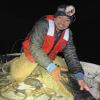
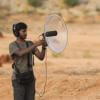





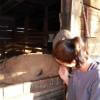













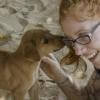





















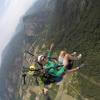





13 March 2019 12:34pm
Hi Laurens,
Would be great to connect. Sent you a mesage directly.
Best,
Vance